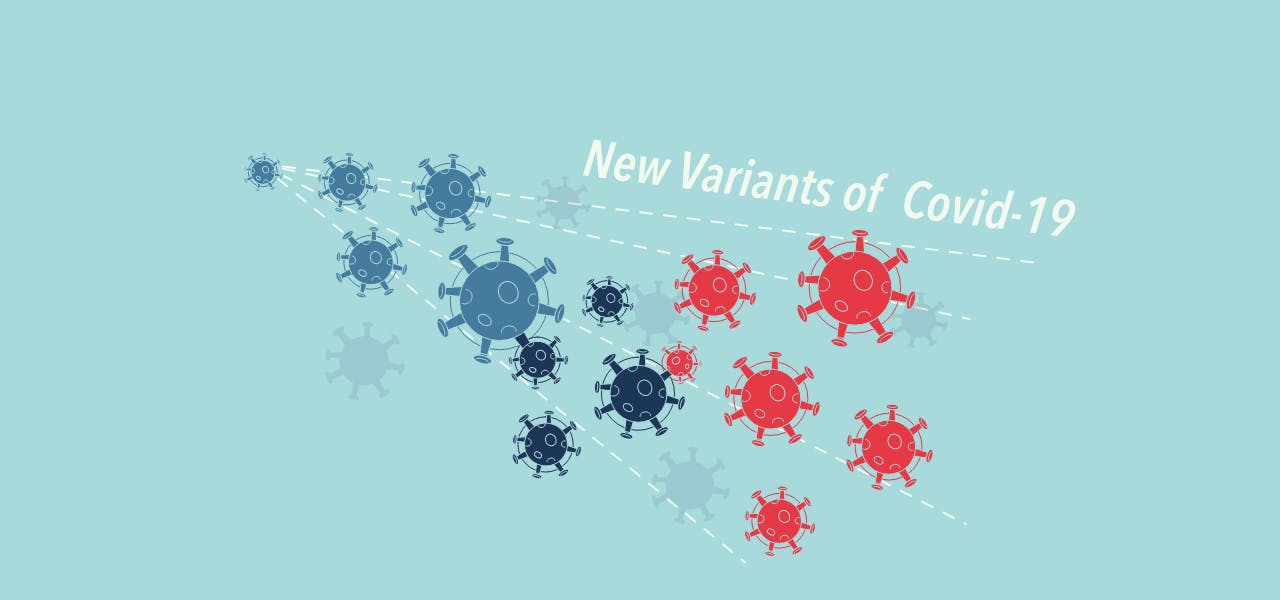The panic of the COVID-19 pandemic was just beginning to abate with the release of multiple vaccines when suddenly news broke of mutations in the coronavirus began to spread. These new strains put extra pressure on already overwhelmed research facilities, healthcare facilities, and a collective society taxed to the breaking point.
But although “mutating” viruses sound scary and add more worry and panic to a general population that is already afraid and confused, the fact is that scientists had predicted these new strains because it’s the way viruses work. As human immune systems begin to learn how to attack the virus, it shifts and changes in order to survive. But knowing the difference between the original strain of COVID-19 and the variants is essential because it affects how healthcare providers treat an infected patient, so researchers are working nonstop to educate the world on the differences, how to prevent infection, and how to treat it once it happens.
How COVID-19 Works
Viruses are not new. They have been around for millions of years, and humans have been dealing with them in some way, shape, or form since the beginning. But the coronavirus of 2019 is a whole new ball game, and one that scientists and healthcare facilities were not prepared to handle.
The COVID-19 virus infects the body through healthy cells. Once it’s in, it makes copies of itself, or replicates, and multiplies to spread throughout the entire body. The proteins on its surface are spiky, making it extra dangerous and easy to attach to healthy cells. It seems to prefer the lungs, and the viral proteins use the ACE2 receptors to break into a healthy cell and hijack it, taking over.
As it heads out of the lungs and down the respiratory tract, it usually inflames the respiratory system, often resulting in pneumonia. Because it focuses on the ACE2 receptors, and your lower airways are full of them, it gets deeper in the body than typical colds do and causes more significant damage. In bodies that can’t defend against this onslaught of vicious attack, it results in death.
But knowing how to prevent spreading the virus, building your immune system, and getting the vaccine against it are all excellent steps of mounting a defense.
What is a Mutating Virus?
Viruses mutate frequently, since their only goal is survival. But for the most part, these mutations aren’t functional, meaning they don’t change how the virus behaves, so it is still predictable. These small mutations are simply surface changes that make it harder for the body to recognize the virus and defend against it immediately.
Changing a virus too much tends to weaken it overall, but the more diverse the strains are, the better it can survive against an influx of vaccines and strong immune systems that have already been exposed to other strains. In the case of the COVID-19 mutations, the changes can actually make the virus perform better, though. These mutations have allowed the coronavirus to adjust to the immunities already in place, learn from them, and work stronger, optimizing the virus and helping it increase in speed.
The New Variants and What They Mean
Variants found in South Africa, the United Kingdom, and the United States have been singled out for study. The strain in South Africa, called the B.1.351 lineage, is much easier to transmit than the original strain, which was already highly contagious. The B.1.351 strain of the virus is predominantly found in infected patients in the area, replacing the other virus lineages that had previously been seen in each study.
The concern is that these variants, being more transmissible, could also be resistant to current vaccines and medications that work on the original COVID-19 strain. There hasn’t been enough time to study how it responds to the vaccines and treatments to determine the results. However, as the virus mutates, it responds to the vaccines, which immunize against the spike protein. If the mutations adjust this piece of the virus, it could easily pass by the nurse cells that recognize it through the vaccine’s instructions.
Getting the vaccine does mean that you receive a broad base of instructions to recognize most of the variants, though. Your cells might not recognize the intruder as the COVID-19 or a variant, but it will see the cell as an intruder and begin defending your body.
The best way to protect yourself is to listen to WHO and CDC instructions, take precautionary measures, build up your immune system through nutrition and exercise, and get the vaccine when it’s available to you.
